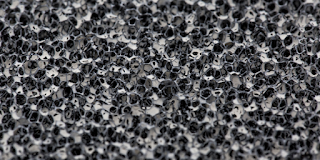How air purifier development?
In 1823, John and Charles Dean invented a new type of smoke protection device that would allow firefighters to avoid smoke during fire extinguishing.
In 1854, a man named Johns Tennessee made new progress on the basis of the invention of his predecessors: Through several attempts, he learned that adding charcoal to an air filter can filter out harmful and toxic gases from the air. .
During World War II, the U.S. government began conducting research on radioactive materials. They needed to develop a way to filter out all harmful particles to keep the air clean and scientists could breathe. HEPA filters came into being.
In the 50s and 60s of the 20th century, the HEPA filter was very popular. HEPA is a filter standard, that is, for a 0.3-micron particle, it has a filtration efficiency of more than 99.97%, and it requires a single filtration efficiency. In an air purifier, the wind resistance of a filter that meets the HEPA standard is too high to be applicable.
In the 1980s, the focus of air purification has shifted to air purification methods, such as home air purifiers. Past filters are very good at removing odors, toxic chemicals, and toxic gases in the air, but they cannot remove mold spores, viruses, or bacteria. The new home and office air purifiers can not only clean the toxic gases in the air. It can also purify the air and remove bacteria, viruses, dust, pollen, mold spores, etc. from the air.
Since the late 1990s, with the increasing demand for sterilization and deodorization, there has been an “antibacterial fever” in the field of air purifiers. The air purifier also used the photocatalyst filter cartridge in 1996 to improve the sterilization and deodorization performance.
After 2002, affected by the spread of SARS and the new influenza epidemic, there is an increasing demand for anti-virus air purifiers. Developed and equipped the air purifier with "stream energy" technology. The technical air purifier uses a decomposition (oxidation) filter to capture bacteria and viruses.
In 2008, in addition to countermeasures to remove harmful substances in the air, in order to meet the need to eliminate room drying, air purifiers have added "humidification function."
As of 2013, the vast majority of air purifiers on the market, especially air purifiers below 10,000 yuan, cannot be referred to as "HEPA."
In 2014, the very charcoal filter technology was first used in the air purifier industry.
www.olansigroup.com
melody@olansigroup.com
mob/wechat/whatsapp:+86 138 2478 4081
In 1854, a man named Johns Tennessee made new progress on the basis of the invention of his predecessors: Through several attempts, he learned that adding charcoal to an air filter can filter out harmful and toxic gases from the air. .
During World War II, the U.S. government began conducting research on radioactive materials. They needed to develop a way to filter out all harmful particles to keep the air clean and scientists could breathe. HEPA filters came into being.
In the 50s and 60s of the 20th century, the HEPA filter was very popular. HEPA is a filter standard, that is, for a 0.3-micron particle, it has a filtration efficiency of more than 99.97%, and it requires a single filtration efficiency. In an air purifier, the wind resistance of a filter that meets the HEPA standard is too high to be applicable.
In the 1980s, the focus of air purification has shifted to air purification methods, such as home air purifiers. Past filters are very good at removing odors, toxic chemicals, and toxic gases in the air, but they cannot remove mold spores, viruses, or bacteria. The new home and office air purifiers can not only clean the toxic gases in the air. It can also purify the air and remove bacteria, viruses, dust, pollen, mold spores, etc. from the air.
Since the late 1990s, with the increasing demand for sterilization and deodorization, there has been an “antibacterial fever” in the field of air purifiers. The air purifier also used the photocatalyst filter cartridge in 1996 to improve the sterilization and deodorization performance.
After 2002, affected by the spread of SARS and the new influenza epidemic, there is an increasing demand for anti-virus air purifiers. Developed and equipped the air purifier with "stream energy" technology. The technical air purifier uses a decomposition (oxidation) filter to capture bacteria and viruses.
In 2008, in addition to countermeasures to remove harmful substances in the air, in order to meet the need to eliminate room drying, air purifiers have added "humidification function."
As of 2013, the vast majority of air purifiers on the market, especially air purifiers below 10,000 yuan, cannot be referred to as "HEPA."
In 2014, the very charcoal filter technology was first used in the air purifier industry.
www.olansigroup.com
melody@olansigroup.com
mob/wechat/whatsapp:+86 138 2478 4081


评论
发表评论